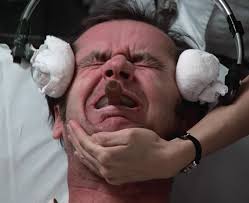
With news that the North American cannabis industry grew by 30% in 2016 to reach a total of USD6,700,000,000 worth of sales, savvy investors in North America are scrambling to get a piece of the action. Stats show that the cannabis industry is projected to grow at a compound rate of over 25% until 2021, a faster pace of growth than even the Internet managed during the dotcom era.
New Zealand could easily become one of the world leaders in the cannabis industry. Almost nowhere in the world has the same combination of excellent growing conditions and a passionate and knowledgeable workforce. But, sadly, almost nowhere else in the world has a political class as cowardly and short-sighted as ours.
The New Zealand Government and our business elites constantly stress the importance of innovation for our future economic well-being. We are told everyday that we need to be smart and be one step ahead of our competition. Well, our competition is blazing ahead – 21% of the American population now lives in states where recreational cannabis is fully legal. This equates to over 60 million people.
The 4.7 million people trapped on our archipelago at the bottom of the South Pacific are losing out, and because of the incompetence of our political leadership we are falling further and further behind. Every quarter that passes means that our competition in North America advances their business practices further ahead of ours, meaning that it will be harder and harder for New Zealanders to compete in this market once we are finally allowed to do so.
For example, much of the new investment money flowing into the North American cannabis industry is establishing a capital base that, if we keep sitting on our hands, we won’t be able to compete with.
New technologies such as sensors that precisely measure the environmental conditions inside grow rooms, and computer software that makes adjustments to these conditions for the optimal possible plant growth, are being developed and rolled out in territories where it is legal to do so. New LED lighting technology is making it possible for growers to tailor the precise wavelength frequency of the light in their growing operation to the specific needs of the strain being grown.
These are examples of the kind of innovation that is generating money for people in more enlightened jurisdictions. New Zealanders could be competing with the North Americans for a share of this market, but we’re not allowed to.
We are also falling behind our competition when it comes to knowledge.
This is a double mistake because much of the knowledge of how to best produce a cannabis crop is in the hands of Maoris, who are the most desperate for new economic opportunities. As demonstrated by Hikurangi Enterprises, who have conducted a successful trial for growing hemp, many of the most knowledgeable Kiwis when it comes to cannabis are Maoris, who generally never believed the Government’s bullshit about cannabis anyway.
Ironically, a former Waikato farmer, John Lord, has used the agriculture knowledge that New Zealand excels in to become one of the heavyweights of this burgeoning industry in Colorado. He states openly that if New Zealand legalised cannabis like Colorado did five years ago, it would be worth thousands of jobs to the New Zealand economy (his estimate is 15,000). This is over and above the $400,000,000 we would save every year from costs relating to prohibition.
New Zealand is missing out on a plethora of economic opportunities in the cannabis market for no other reason than that our ruling class is backwards, cowardly and ignorant. It’s a terrible waste.



